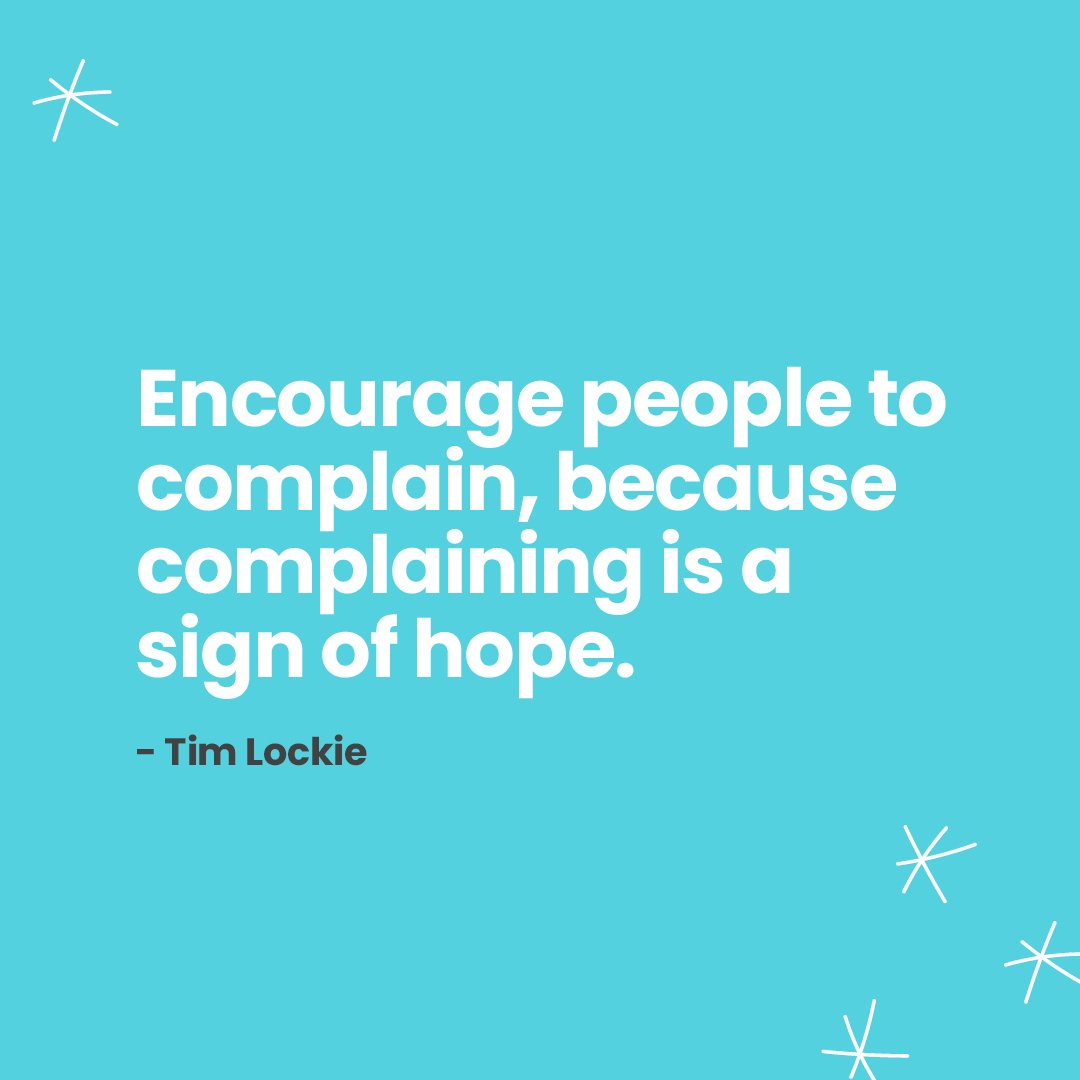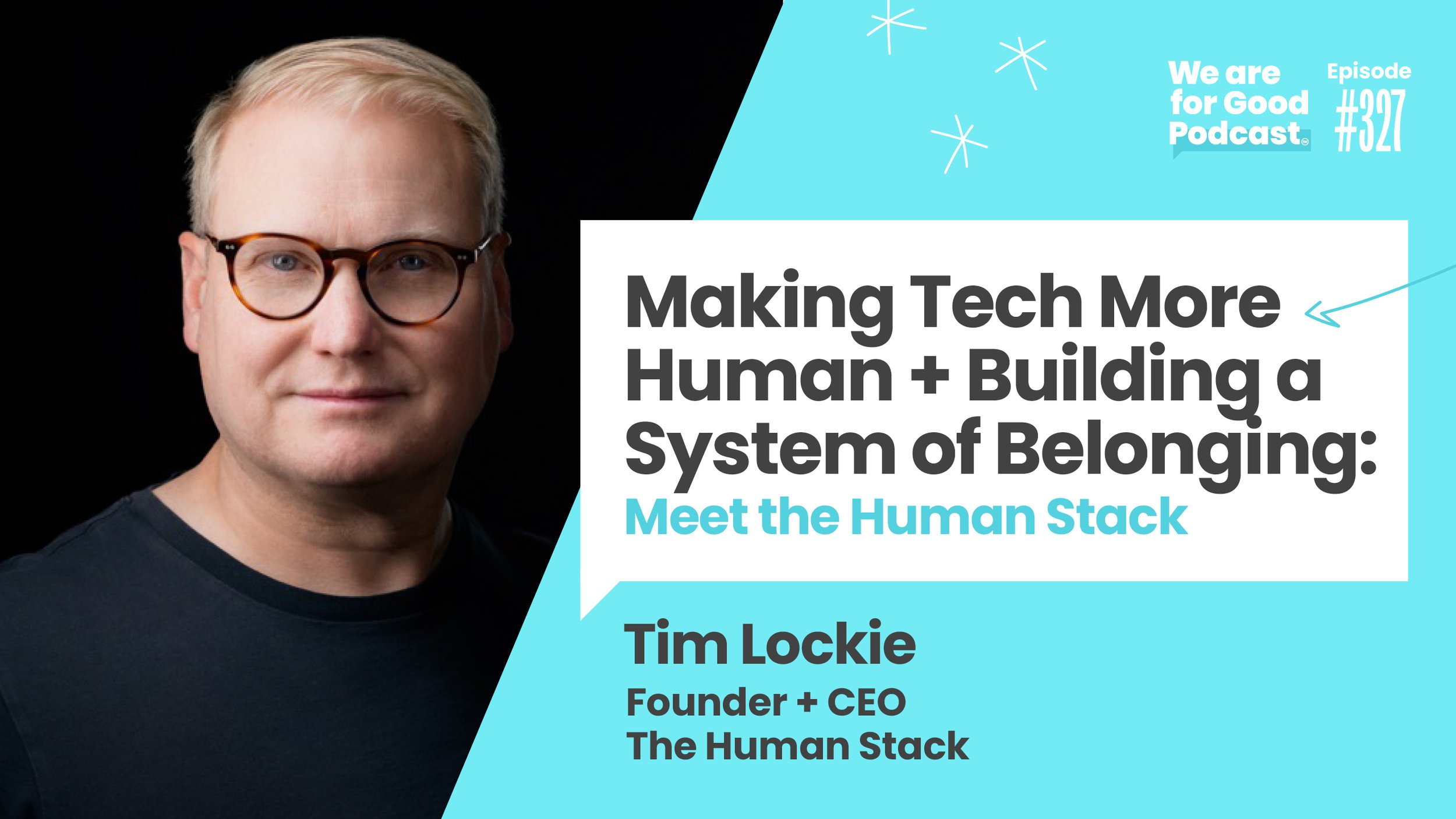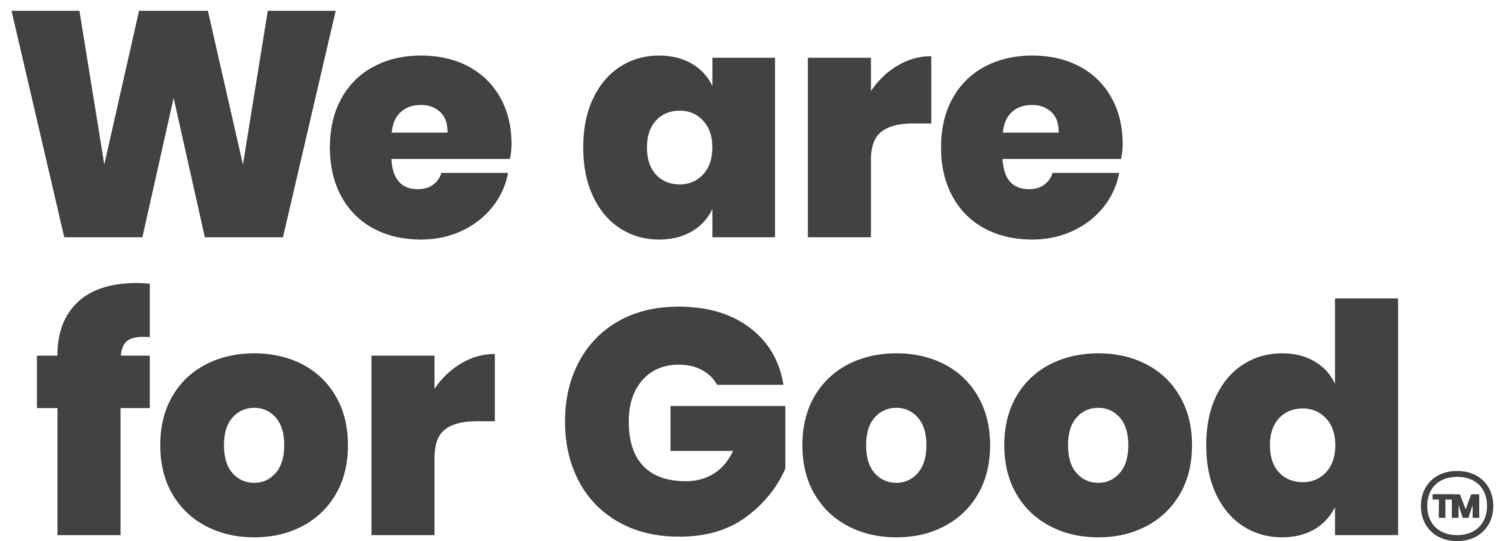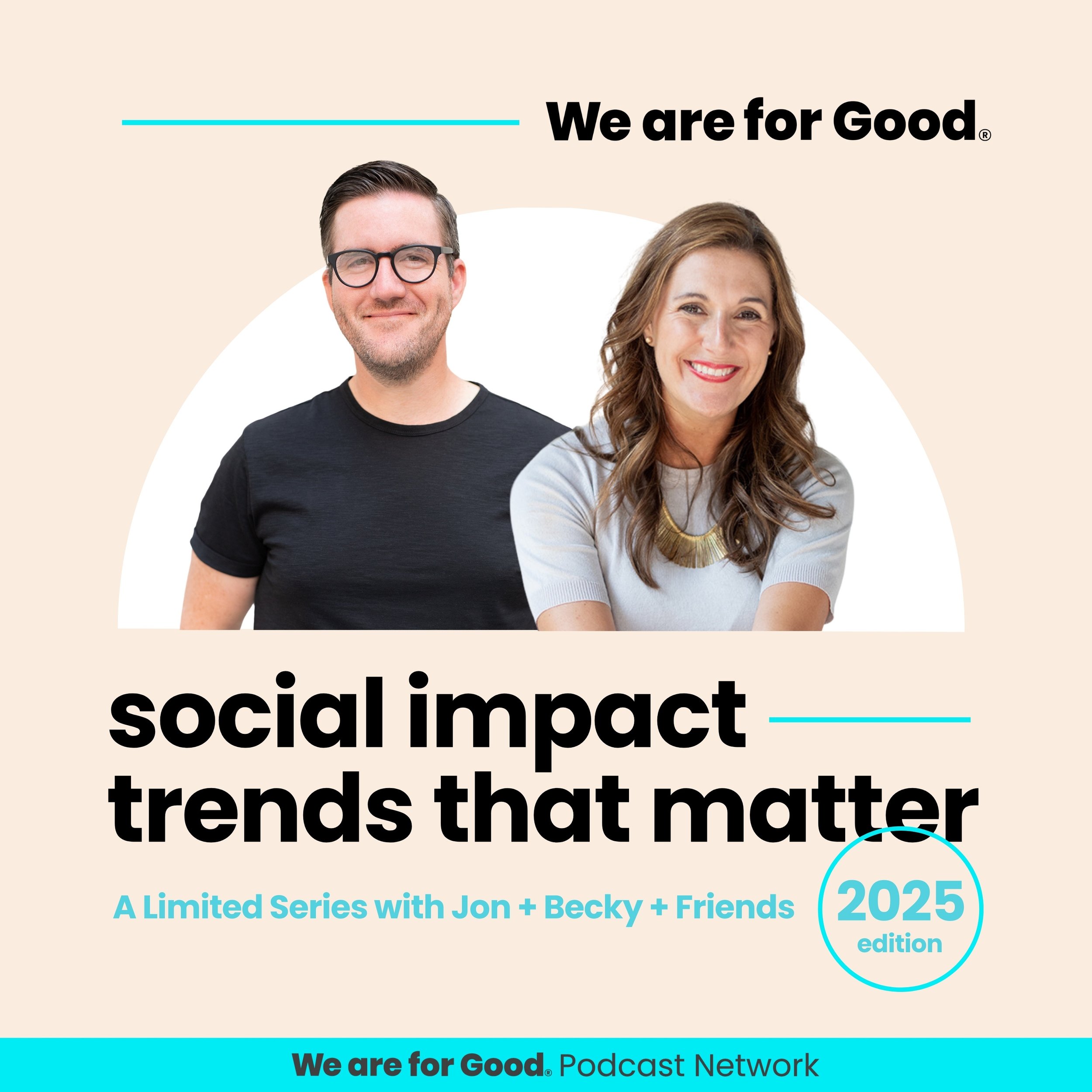
My Implementation Story: Sinking in the gap between humanity and technology - Abby Fox
My Implementation Story: Sinking in the gap between humanity and technology - Abby Fox

Abby Fox, Chief of Staff for We Are For Good
A girl walks into a hotel bar and meets a tech guru.
The tech guru says, “Hi, my name is Tim. I teach humans how to drive tech.”
The girl says, “Where were you two years ago? A CRM implementation drove me off the cliff.”
Spoiler alert! The girl in the story is me and the tech guru is Tim Lockie, CEO of The Human Stack. We met IRL at the Association of Donor Relations Professionals International Conference last month.
That intro led to us swapping CRM implementation “war” stories. Because of course that’s how you classify extreme situations you were drafted into. The conversation was playful at first and then a little haunting as I replayed the implementation that led to my career change. He encouraged me to share my story so we in the nonprofit sector don’t keep getting this wrong.

I cringed a little at the idea of that. And then I remembered how defeated I felt when I drafted this message to my boss. When I didn’t show up to work the next day because I needed a mental break.
I remembered the moment when I found the courage to speak up. When I saw how we were missing things. When I put voice to some of my fears and struggles. And - in that same moment - I was met with this response, “It’s OK. This is totally normal. All implementations are like this.”
All? Really? Can those of us who do this for a living not find a better path forward? I phrase it as a question because I don’t have the answer. But maybe if we come together around the void between humanity and technology we can make meaningful change as a collective.
How it Started
For context, CRM stands for customer relationship management. It’s technology used to help organizations better engage with their customers/donors. As a former donor relations professional, I understand the value of relationships. No one had to sell me on the importance of a more dynamic system. I was ready to help usher it in.
I was on a team with incredible people working with incredible partners. We took our time to implement, so the process didn’t happen overnight. We sought counsel from outside partners who’d done this before…more than a few times. On paper, we did it all right. If I could have turned off the human part of me, I think I would be OK with how it all turned out. But of course I can’t. I am human.
Donor relations was my profession of choice and an area I truly love. I find joy in expressing gratitude to others and thanking them for the role they are playing in mission work. It fuels me. When I was asked to be a sprint champion - a subject matter expert on stewardship and the donor portal - I was honored and excited to learn more about this fabulous solution that could do anything. The sky was the limit, and our tagline read, “We’re going from a bike to an airplane.”
We were using Agile methodology. The commitment was three weeks of intense meetings during our sprint but leadership would prioritize our involvement in the meetings and accept that our day jobs might take a back seat during that time. It was framed as the implementation that was going to propel our organization into the next decade. And we were showered with praise when we were selected to be the people who were going to build the future.
Technology defines our future. That should have been a warning sign right there. It is most certainly an important part of our future. But dangerous things happen when you put technology first.
How It Ended
That three weeks of intensity extended again and again and again. Until it became 14 months of intensity. Sprint champions have a deep understanding of their piece of the implementation. So naturally, we were called on to not only lead our sprint but also be involved in data validation, integrations, reporting, user acceptance testing, the list seemed to never end. Our implementation partners may have understood the true scope of a sprint champion’s role, but it was certainly beyond what we agreed to at the start.
Each additional sprint had its own meetings. We entered an extended period of time where I had back-to-back meetings for 5-6 hours – every day. The schedule takes its toll after a while.
About six months into the implementation, you could see the psychological principle of fight or flight playing out in real time. Some people were pressing in and trying to take control of their situation and others were checking out.
I was team fight. Trying to manage two jobs. The work I felt called to do and this implementation, which was sucking the life out of me. Despite my lack of knowledge and passion for the technical, I found myself chin-deep in integration and data validation. I became a professional delegator to my team of four direct reports who frequently had 1:1 meetings booked over/changed/canceled because I was needed elsewhere. It wasn’t fair to my team, and it wasn’t fair to me, but I don’t quit. I trudged on.
About a year into the project, I saw a therapist for the first time in my life because I was struggling to find joy in the things I value. I had health challenges I’d never faced before. But it wasn’t just my life it was affecting. I didn’t enroll my son in fall t-ball the season before launch because I had to work until 6 every night - and then pull my laptop back out after I put the kids to bed.
This is burnout. And it’s ugly.
People appreciated my efforts, and I truly felt valued by my coworkers. Until I voiced an unpopular opinion. Until I uttered the words “donor experience.” And then there were grunts of exhaustion. It’s not that people didn’t value the donor experience. The true issues were the technical complexities required on the back end to create the desired user experience on the front end. Something had to give.
The hardest moment for me was a conversation with a colleague I love and admire. We found ourselves facing an issue on opposing sides. I stopped by her cube after work one day to say, “What am I missing? Why aren’t you in favor of exploring the solution that keeps online giving open during the four-day transfer period?” And I was met with, “Because I care about (the coworker hypothetically named) Pat.” Pat was the team member who had reached his limit. And understandably so. We were all there - whether or not we wanted to admit it.
So we shut down the giving page during launch and it went just fine. No one died. (The standard we resort to when we’re desperately seeking to de-escalate a situation.)
There were hiccups but none of them major. We had succeeded. So why did this victory feel so hollow?
For me it was because we were driven to the point of having to choose between taking care of ourselves and serving our mission. And when I say we, I mean me, too.
I do care about Pat. And I care about myself. And I care about my son getting to play t-ball. And I care about my direct reports. And I care about the experience of donors. And I care about making education accessible to all through generosity. These are not either/or scenarios. They are both/and.
We need to face the reality that it is impossible for a project to succeed when it’s driving people into the ground. I had more to give that organization. I still care deeply about it. But I was done sinking, I wanted to soar. And every peer I’ve spoken with who’s in the throes of a similar implementation wants the same.
We need tech that works for us. That makes our lives better. And we need ways to implement it that won’t break us in the process. We have world-changing work to do.
Over the past two years, I have asked person after person from practitioners to consultants to software team members, “How do you implement a CRM well?” And I’m met with a shrug of the shoulder, a shaking of the head, an exasperated sigh. There isn’t a magic bullet. At least not yet.

Episode #327: Making Tech More Human + Building a System of Belonging: Meet Human Stack
Tim's company, The Human Stack, is working on exactly this. You can learn more about his mission and his innovative approach on the We Are For Good Podcast: Episode 327.
I don’t always feel hopeful when I think about my experience. Sometimes I feel defeated. Like we all went in with the best of intentions and a solid playbook but somehow I wound up on the losing team. But Tim gives me hope. And he encouraged me to think of complaining as a sign of hope. It’s engagement.
There’s a reason I can’t let this experience slip into the silence of the night. For better or for worse, I’m still team fight.
Technology matters. Humanity matters. We have to master them both. So let’s think of and share solutions that will bridge the gap. Because there are nonprofits out there who are trying their darndest to get this right and losing good people in the process.







